Spain is one of those countries where there are simply too many good destinations to choose just one. Whether it’s your first trip or your fifth, it’s easy to get excited about the prospect of visiting new places in this inspiring corner of Europe. Though there are plenty of cities, towns, and beaches to choose from, one Spanish destination you can’t miss is the city of Seville.
Found in the magnificent region of Andalusia, Seville is ideal as either a city getaway or part of a greater Spain trip. With two days in Seville, you’ll see that this passionate city overflows with culture, food, history, and everything in between. It may seem tough to fit such a fun destination into only two days, but with this Seville itinerary, it’s certainly possible. With that in mind, here’s what to do in Seville in two days to get as much out of the experience as possible.
Best Time to Visit Seville
The best time to visit Seville depends on what kind of experience you want there. The weather and your interest in certain cultural events largely determine the best time for your visit.
Seville’s high season isn’t dictated by the weather but by two important cultural celebrations. In March and April, the city celebrates Semana Santa (Holy Week) and Feria de Abril (the April Fair). The former is a Roman Catholic festival with parades and events, while the latter is a six-day carnival. If you come at this time of year, you’ll get to experience something special and unique to Seville, but the city will be at its absolute busiest.
Outside the festival season, you’ll find that Seville’s weather is best in May and June. Though it’s still technically high season for the city, the crowds aren’t nearly as bad.
Seville is also quite pleasant in winter, as it never reaches the low temperatures found elsewhere in Europe. By going in January or February, you avoid the rain of autumn while still enjoying the affordability of the shoulder season.
Seville does have a wrong time to visit, though – July and August. Not only is the city hit with sweltering heat that makes afternoon sightseeing truly unpleasant, but locals leave for their holidays. A place isn’t quite the same without its people, is it?
How to Get Around Seville
When visiting Seville, you can walk between most of the attractions, especially in the historic center. But if walking all day isn’t an option for you, you can use Seville’s public transport.
Besides walking, the two best options to get around in the city center are the bus and tram. The bus is particularly useful, as it has routes and stops all through the city. It’s best to get a rechargeable Tarjeta Multiviaje (Multi-Trip Card) or one of the tourist cards, which work out to be better value than buying a €1.40 single-trip ticket on board.
The tram line runs right through the heart of the city, from Plaza Nueva to San Bernardo, stopping between many of Seville’s highlights. A single ticket for the tram is €1.20 (about $1.31). Seville is also serviced by a single metro line, but unfortunately, the way it cuts across the city isn’t really useful for sightseeing.
For those needing to get from Seville Airport into the city center, a 35-minute bus journey connects the two. On the EA Airport Special, a €4 ticket will get you from the airport to your choice of Plaza de Armas or the Santa Justa Train Station.
Where to Stay in Seville
Seville is one city where you’ll have no problem finding accommodations that suit your wants and needs. It’s mainly a matter of deciding which area you want to stay in for your 48 hours in Seville.
If you have any concerns about where to stay in Seville, don’t worry. The city has a reasonably straightforward layout, making it hard to go wrong no matter where you stay. The city center is dense but not huge, so any lodgings you find in this area will have good access to all the main attractions. Even Triana, an interesting neighborhood across the river, is a decent choice, as you can walk or take public transport to the city center from here without much hassle.
If you’re seeking the best place to stay in Seville for indulgent comfort, you can end your search with the remarkably upscale Hotel Palacio De Villapanés. Set inside an actual 18th-century palace, this beautiful five-star hotel boasts big rooms with boutique style.
On the other hand, if you’re seeking the best value for money, look at the Hotel Catalonia Giralda. This reasonably priced four-star hotel has everything you could need, including air conditioning, comfortable beds, and a swimming pool.
Airbnb is another great place to look for inexpensive vacation rentals. For recommendations, check out our list of the best Airbnbs in Seville.
Seville also has many hostels for backpackers and budget travelers, but The Nomad Hostel is one of the best choices. Its dorm beds and private rooms are cheap and clean, and it has great common areas such as a rooftop bar.
For more accommodation options in Seville, check out Booking.com. This site consistently offers the best rates, and its customer service is on point.
The Perfect 2-Day Seville Itinerary
Even just a weekend in Seville is enough to fall in love with the Spanish city. Naturally, you’ll comb the fabulous Old Town to see the absolute best of Seville. But this itinerary doesn’t stop there – it guides you out of the city center into neighborhoods like San Bernardo and even across the river into characterful Triana. This way, you’ll really feel like you’ve seen the city.
However, before we get to our Seville travel itinerary, we just wanted to remind you to purchase travel insurance. You never know what will happen and, trust us, you do not want to get stuck with thousands of dollars in medical bills. As a wise man once said, “If you can’t afford travel insurance, you can’t afford to travel.” So don’t leave home without it.
SafetyWing offers travel insurance for only about $10 a week, making it a no-brainer to get. You can get a quick, non-binding quote below:

SafetyWing is, of course, not the only option available. Two other popular alternatives are World Nomads and Heymondo.
Now that you’re prepared for your trip, it’s time to delve into the best things to do in Seville. You’re going to have a great time with this Seville travel itinerary!
Day 1 in Seville
When you arrive in the city, you’ll want to get right to the best places to visit in Seville. We’ll start in the historic city center and slowly move southward to the San Bernardo area.
Recommendation: The first three stops on this itinerary are some of Seville’s most important monuments. To get the most out of your visit and learn more about the history behind the Royal Alcázar, Seville Cathedral, and La Giralda, book a tour with a knowledgeable guide. This three-hour tour includes all three major landmarks and offers the best value for money. In case you don’t want a guided tour of all three, though, we also list individual tours for each attraction below.
Real Alcázar of Seville
The perfect place to start your visit and be immediately wowed is the enchanting Royal Alcázar of Seville. This palace is still an official residence of the Spanish royal family, so it’s just as extravagant and captivating as you’d expect. Dating back to the 11th century, it’s a UNESCO World Heritage Site and one of Seville’s most popular attractions.
Behind its walls, you can visit the Royal Alcázar’s exquisite rooms, iconic courtyards, and elegantly peaceful gardens. You’ll probably recognize the pools and Moorish architecture of the Patio de las Doncellas, along with the gardens where Game of Thrones scenes were filmed. With so much beauty and grandeur here, you’ll really start your Seville visit on a high note.
Recommendation: Skip the long lines and explore one of the finest examples of Mudéjar architecture in Spain on this amazing guided tour of the Royal Alcázar of Seville.
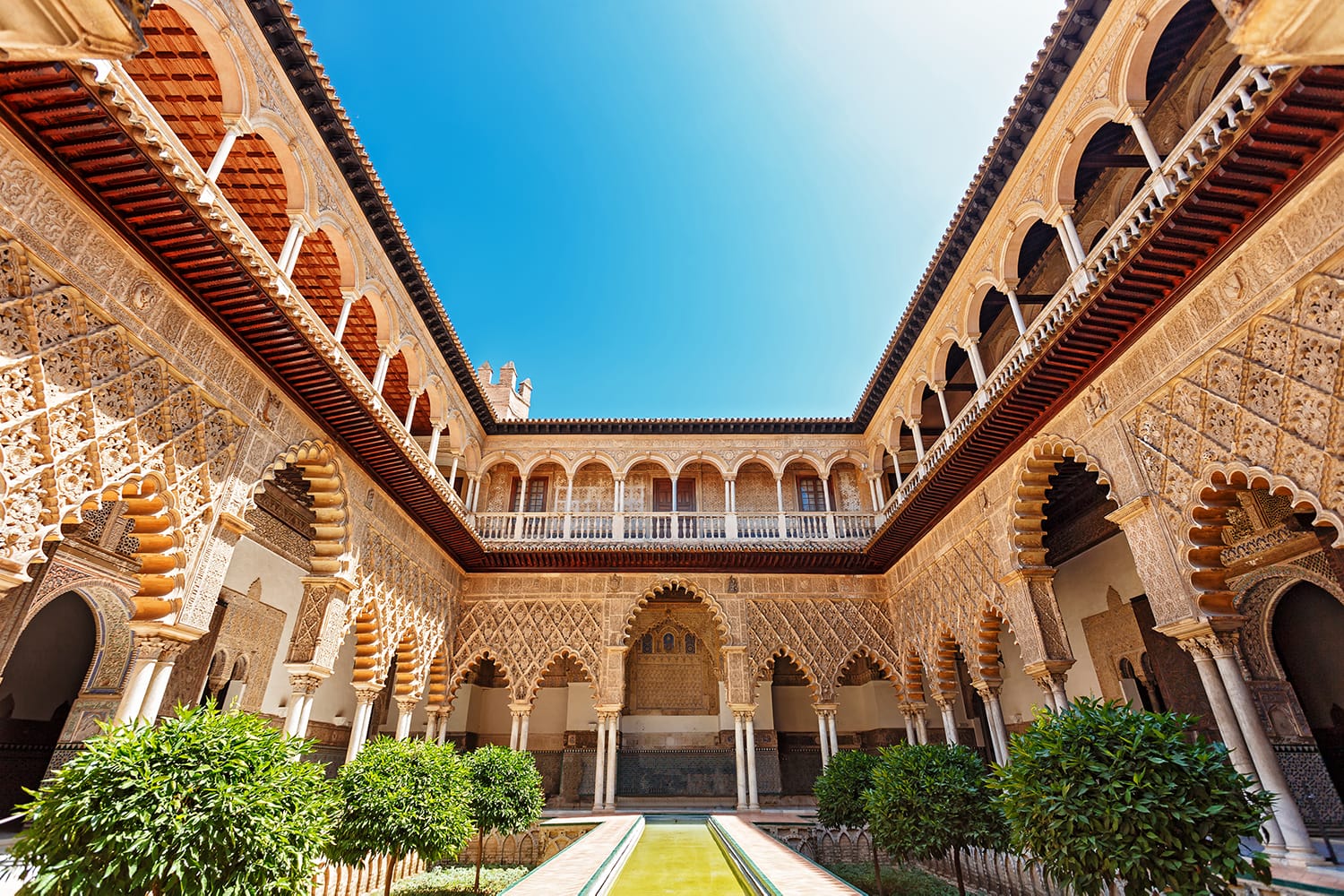
Seville Cathedral
The Royal Alcázar is not the only World Heritage Site in Seville. The city’s other major landmark is the nearby Seville Cathedral (the Cathedral of St. Mary of the See). This cathedral is the third-largest church in the world and the largest of Gothic design – not to mention beautiful inside. Before you visit, though, be sure to check its hours, which vary day to day and usually aren’t very long.
The cathedral was built during the 15th and 16th centuries, in the spot where the city’s mosque stood during the Moorish occupation. While its Gothic architecture is impressive from the outside, its sheer detail and scale is best appreciated from inside. Besides the impressive architecture, you’ll find works by famed Spanish artists, an incredible choir and altar, and the tomb of Christopher Columbus.
When you exit, take a moment among the orange trees of the Patio de los Naranjos. This idyllic courtyard also has a small fountain, a carryover from the old mosque.
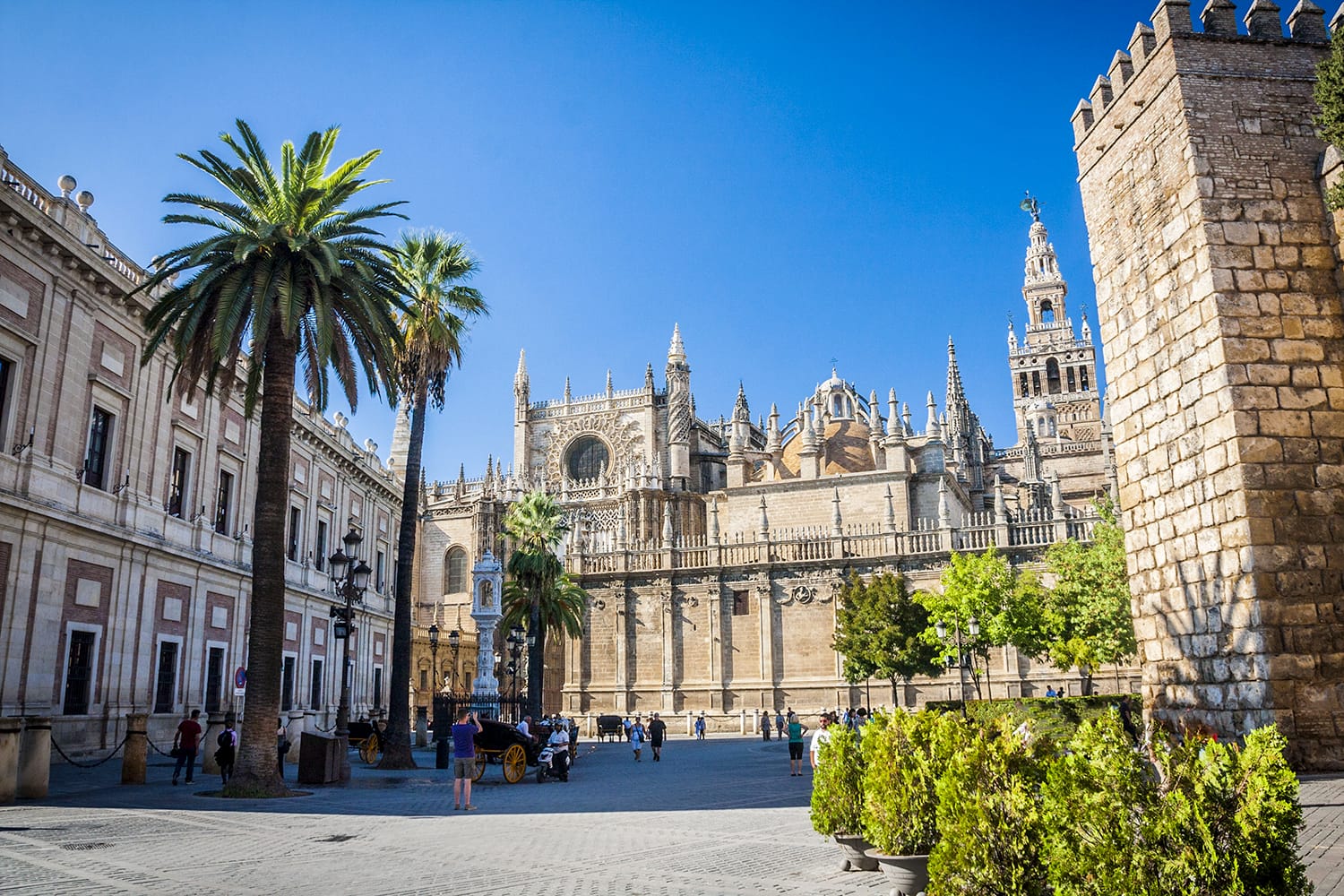
La Giralda Tower
Once you’ve explored the cathedral, make your way up the attached bell tower, La Giralda. Originally a minaret and one of the few remaining parts of the old mosque, the tower is unusual in that ramps lead you to the top rather than stairs. This was so animals could carry up the men who performed the call to prayer five times a day.
As beautiful and ornate as La Giralda is when viewed from the street, the views out over the city are in a league of their own. The ticket to climb La Giralda is included in the cathedral’s entrance price.
Recommendation: If you want to learn more about the history of Seville Cathedral and La Giralda, consider booking a tour with an official guide.
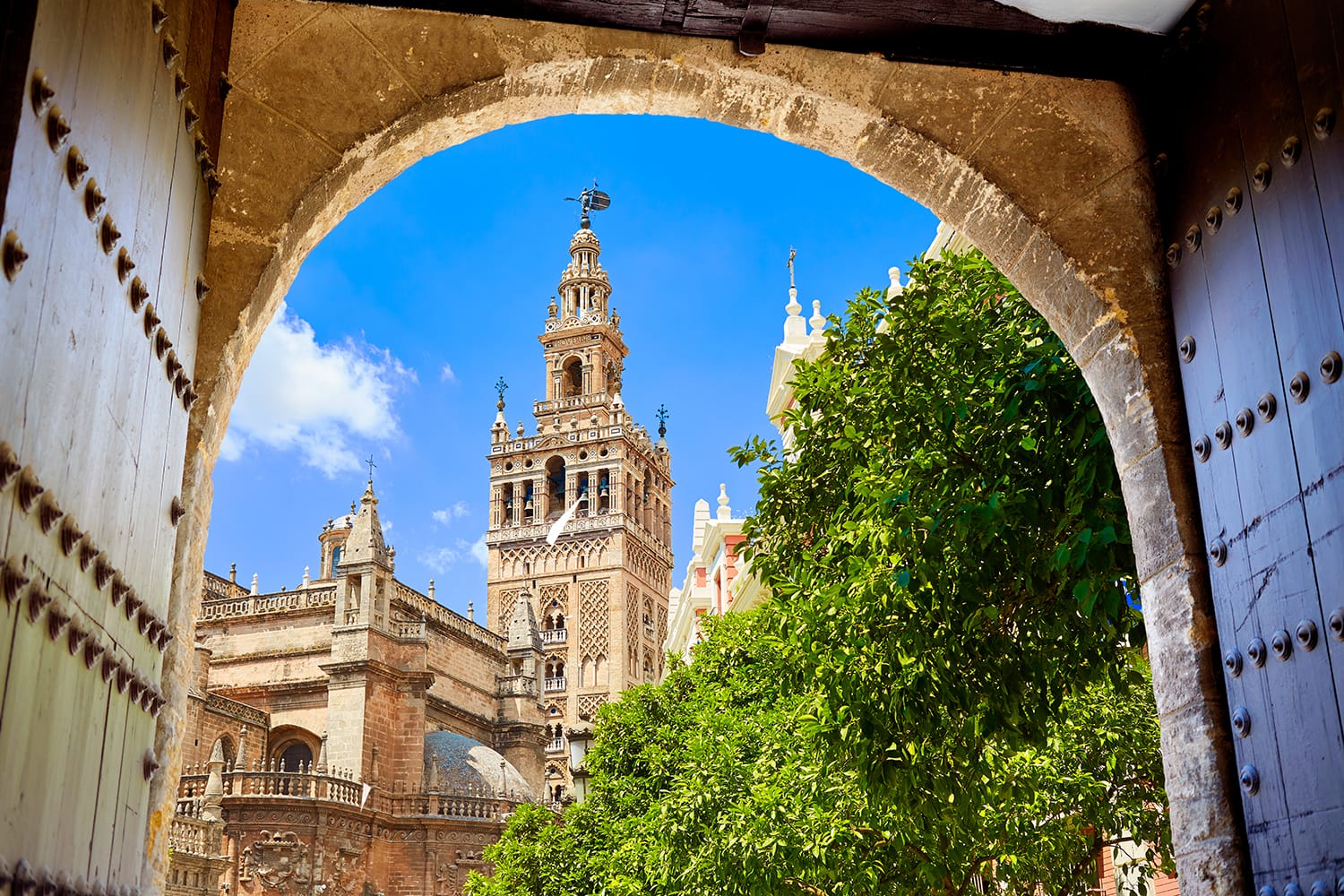
Streets of Santa Cruz
Having spent much of your day so far inside major attractions, you can now wander outdoors for a while. Near the Royal Alcázar, you’ll find the quaint Santa Cruz neighborhood. This narrow maze of historic streets is full of orange trees and pretty buildings painted yellow and white. Getting lost in here is half the fun, and you’ll surely find your way back to Seville Cathedral before too long.
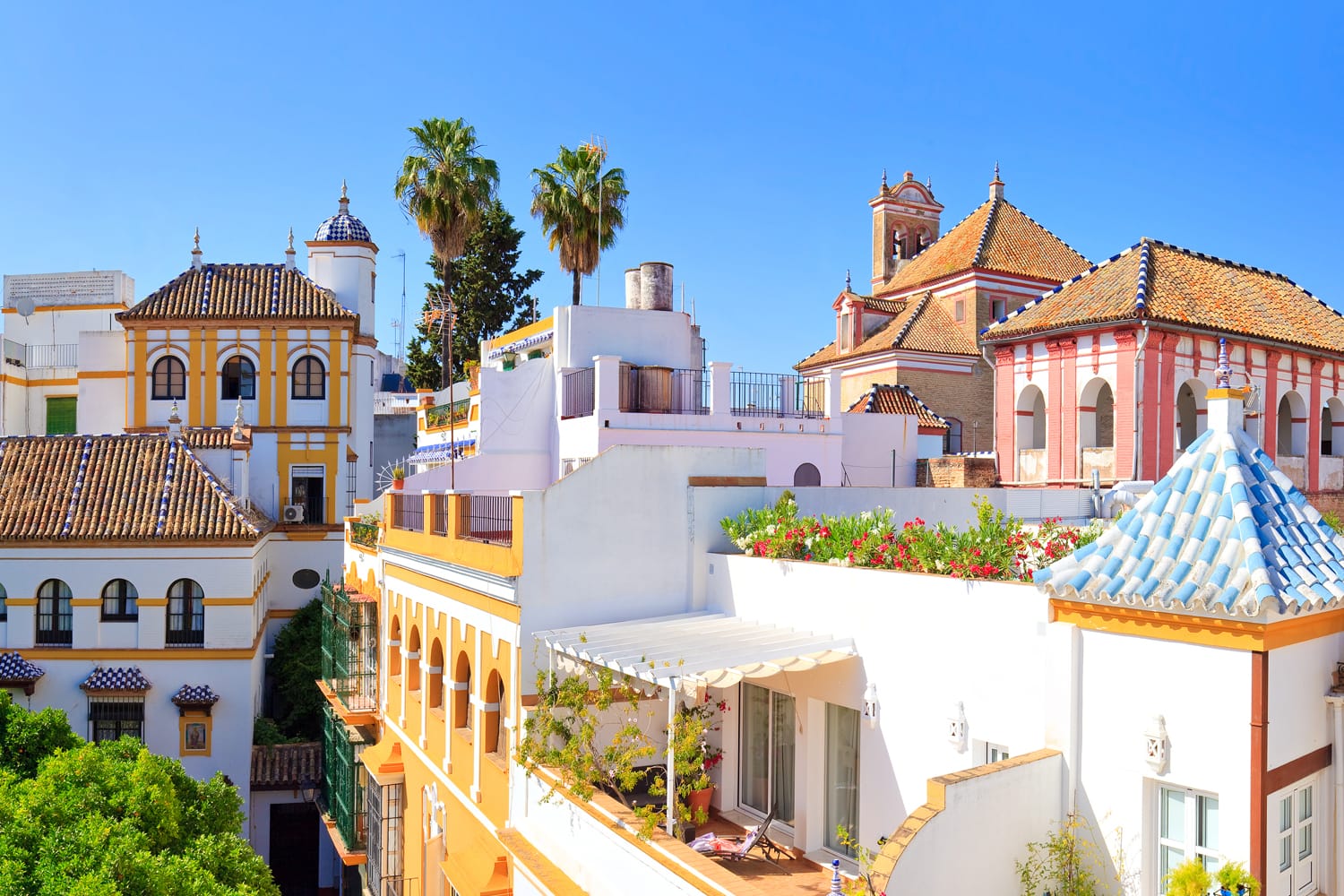
Royal Tobacco Factory
Following the Avenida de la Constitución pedestrian area down behind the gardens of the Royal Alcázar, you’ll find yourself outside the Royal Tobacco Factory. It’s now the main building of the University of Seville, and you’d never guess from its grand architectural design that this was once a factory.
In fact, the Royal Tobacco Factory was responsible for the supply of most of Europe’s cigarettes throughout the 19th century. It’s also famous for being the workplace of the title character in the opera Carmen. Walk through to the inner courtyard to appreciate this former factory in all its glory.
Parque de María Luisa
For a change of pace after spending so much of the day among the city streets, head for the Parque de María Luisa. This large, beautiful park is just south of the historic center, and walking along its wide, leafy pathways makes for a peaceful break.
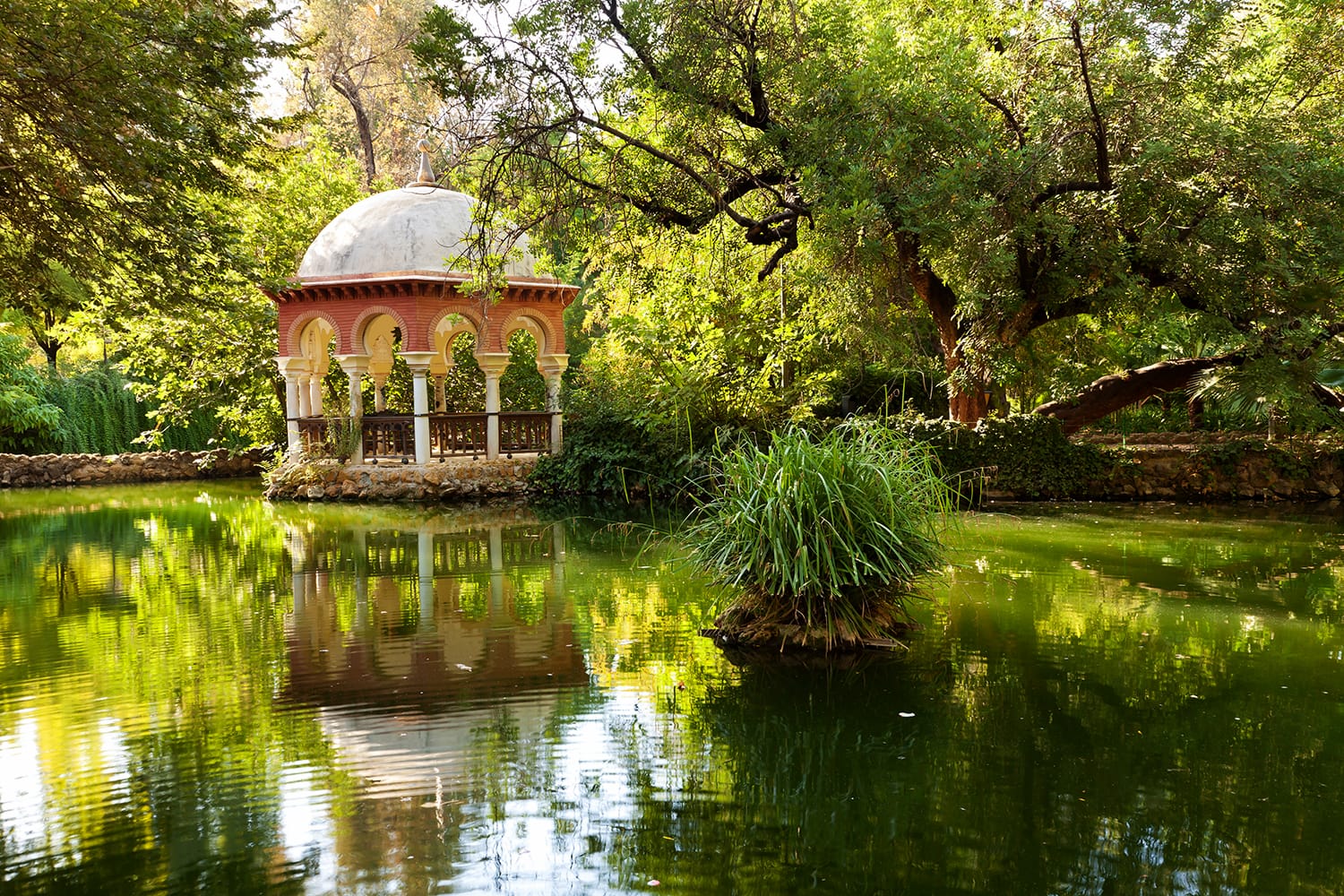
Plaza de Espana
The other key reason to visit the Parque de María Luisa is to see the Plaza de España. It’ll be clear why this is one of Seville’s most popular attractions the moment you set foot here. The plaza is a huge oval space surrounded by a canal and resting below a long pavilion, which features an elaborate design full of imaginative tilework.
The Plaza de España is one of the most photographed spots in historic Seville, though many are surprised to learn that it’s not even 100 years old. The plaza was actually created for the Ibero-American Exposition of 1929. With its various Revival architectural styles, it’s quite the spectacle. In fact, it’s been used as a setting for films such as Lawrence of Arabia and Star Wars: Attack of the Clones.
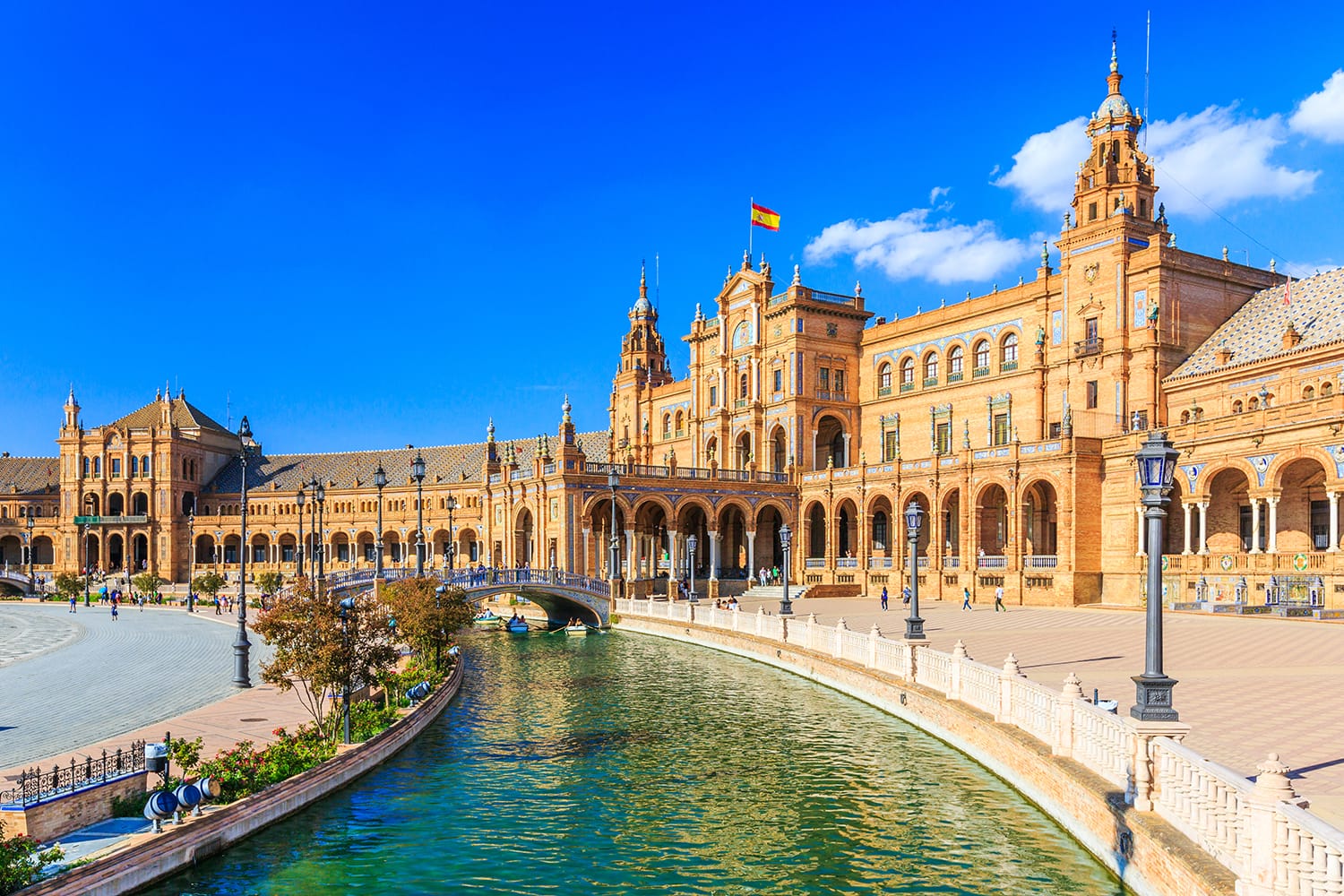
Evening Tapas
When in Spain, you have to try Spanish food, which means tapas! There’s no shortage of restaurants and tapas bars in Seville, but for something simple and central, head for Taberna Coloniales. While it can get busy, its affordable and tasty food is worth the wait. Try the huevos de codorniz con jamón (quail eggs with ham), pechuga de pollo a la mostaza antigua (chicken breast with old-style mustard), and solomillo al whisky (sirloin with whiskey) for a nice mix of tapas.
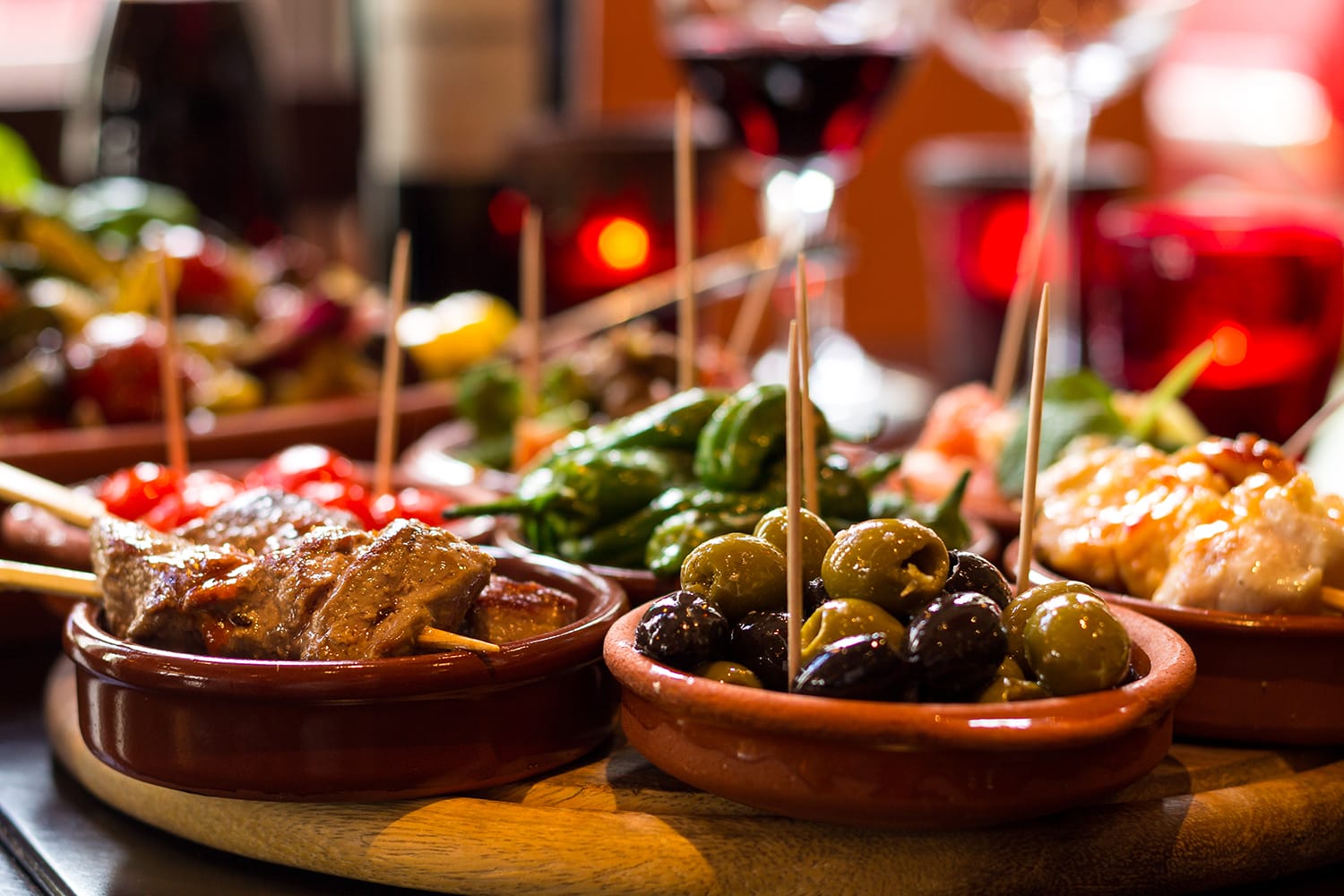
Day 2 in Seville
On your second day in Seville, the plan is to explore a newer part of the historic center, the El Arenal neighborhood, before crossing the river to experience Triana.
Mushrooms of Seville
Start your second day with one of the city’s most popular recent additions, the Mushrooms of Seville (originally known as Metropol Parasol). This modern wooden structure and its waffle-like design sprawls high above a square in the city center to great effect. Not only does it look fascinating from below, but you can also buy a €3 ticket to walk along the top and take in views from its panoramic terraces.
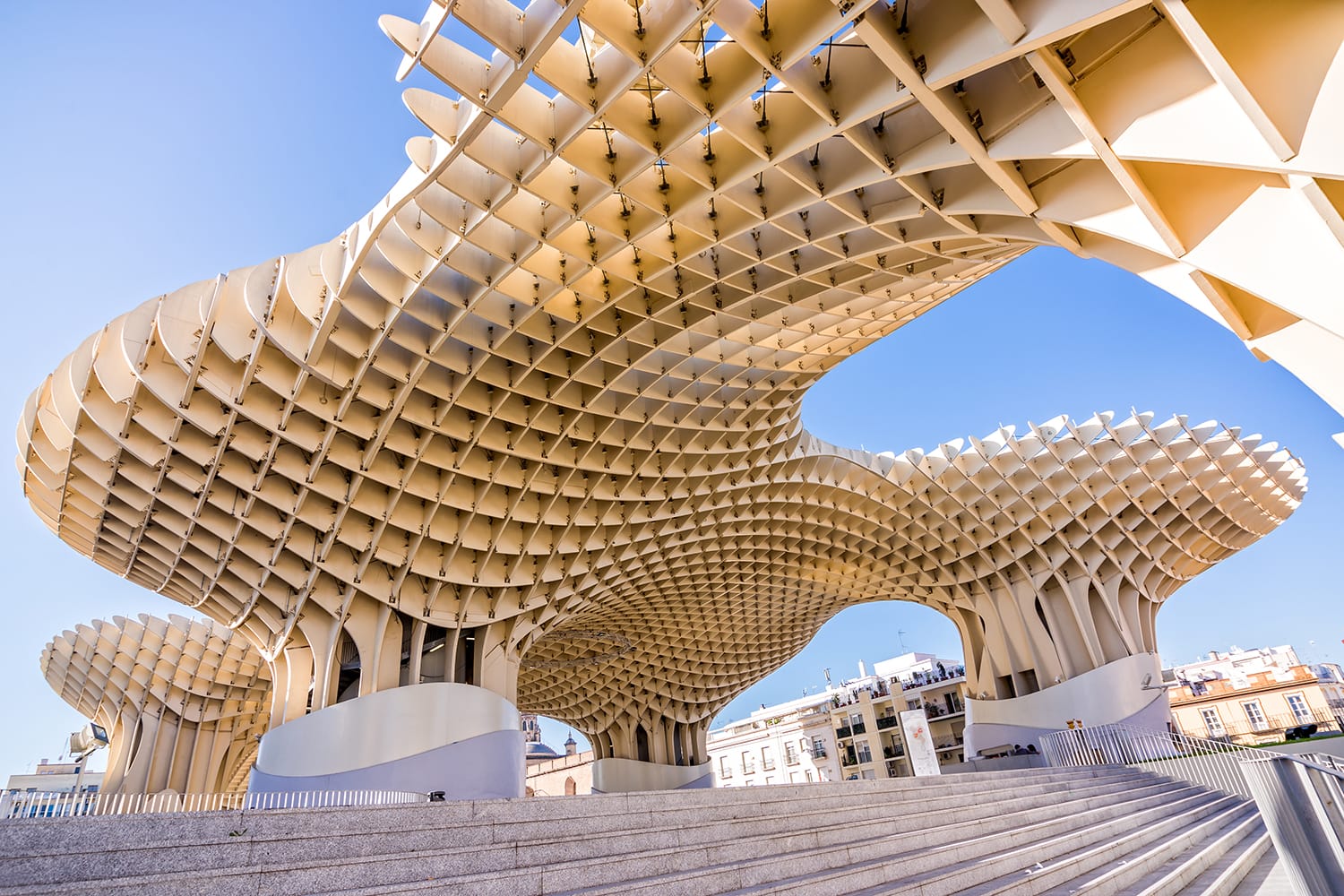
Museum of Fine Arts
You’ll find many museums in Seville, a city of great culture. With only a weekend, though, you may have to pick just one, and the clear choice is the Seville Museum of Fine Arts. Housed inside an old convent, this museum highlights works by artists who contributed to the city’s Golden Age of painting.
Royal Maestranza Bullring
One thing Spain – especially the Andalusia region – is known for is its tradition of bullfighting. While you may not want to actually see a bullfight, you can learn about the history and tradition of bullfighting with a visit to the Royal Maestranza Bullring (Plaza de Toros de la Real Maestranza de Caballería). With a guided tour, you’ll not only see a museum on the sport and the history of matadors, but also get to walk around the historic stands of the beautiful arena.
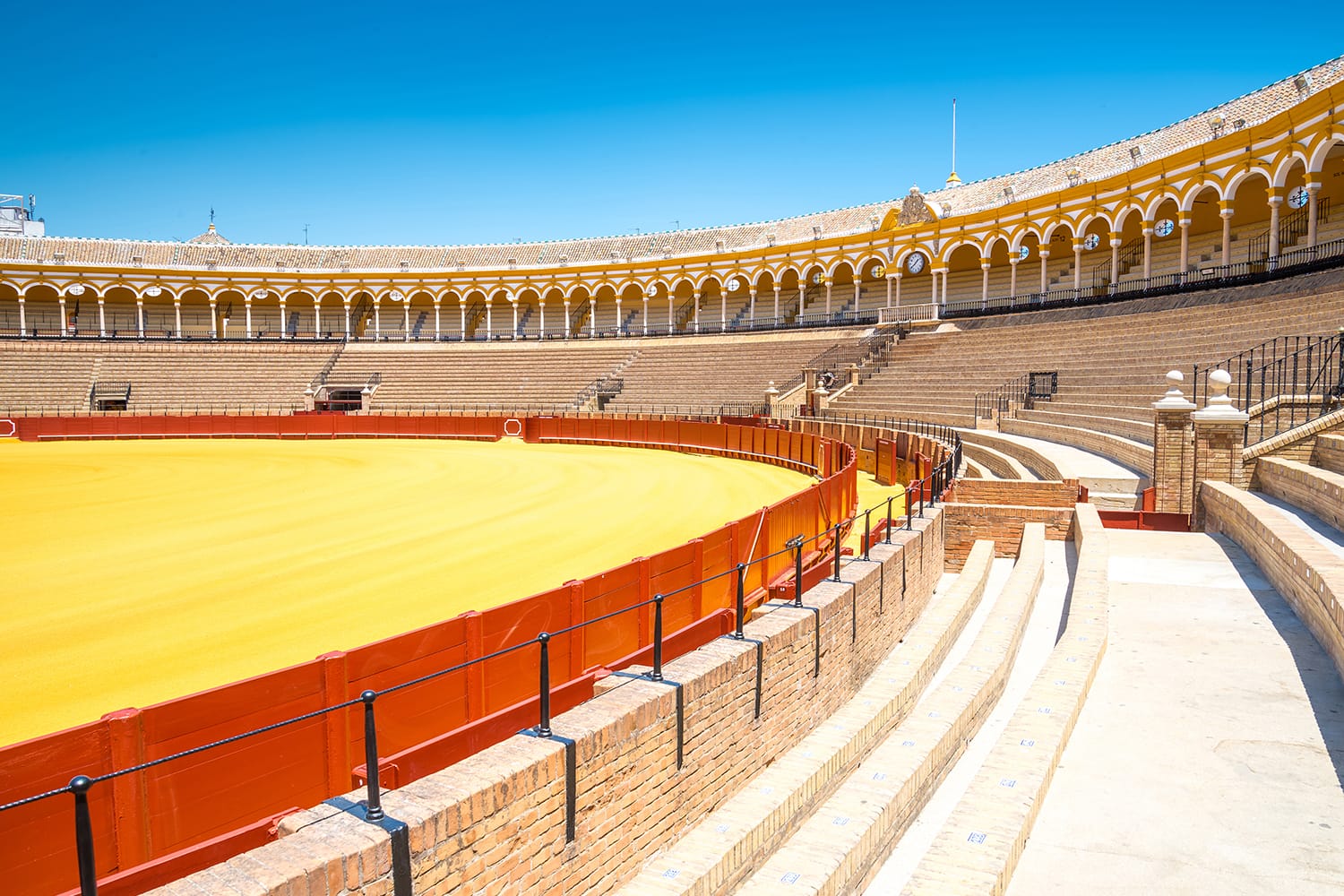
Guadalquivir Riverfront
Once you’ve seen the bullring, you may as well stroll the quiet riverfront of the Guadalquivir. Lined with palm trees and a pleasant stone boulevard, it’s a pleasant place for a walk. It also offers great views along the river, with the modern Sevilla Tower in the distance, and over the water to Triana.
Toro del Oro
Following the Guadalquivir south, you’ll eventually come to the historic Torre del Oro (Tower of Gold). This 12-sided tower stands out along the riverfront by design, given its past role as a watchtower of the city walls. Built by the Moors in the 13th century, it also served various other purposes, acting as a prison and as an anchor point for chains blocking passage along the river. It now houses the Seville Naval Museum. Along with visiting the small museum, you can climb the tower for river views from the roof.
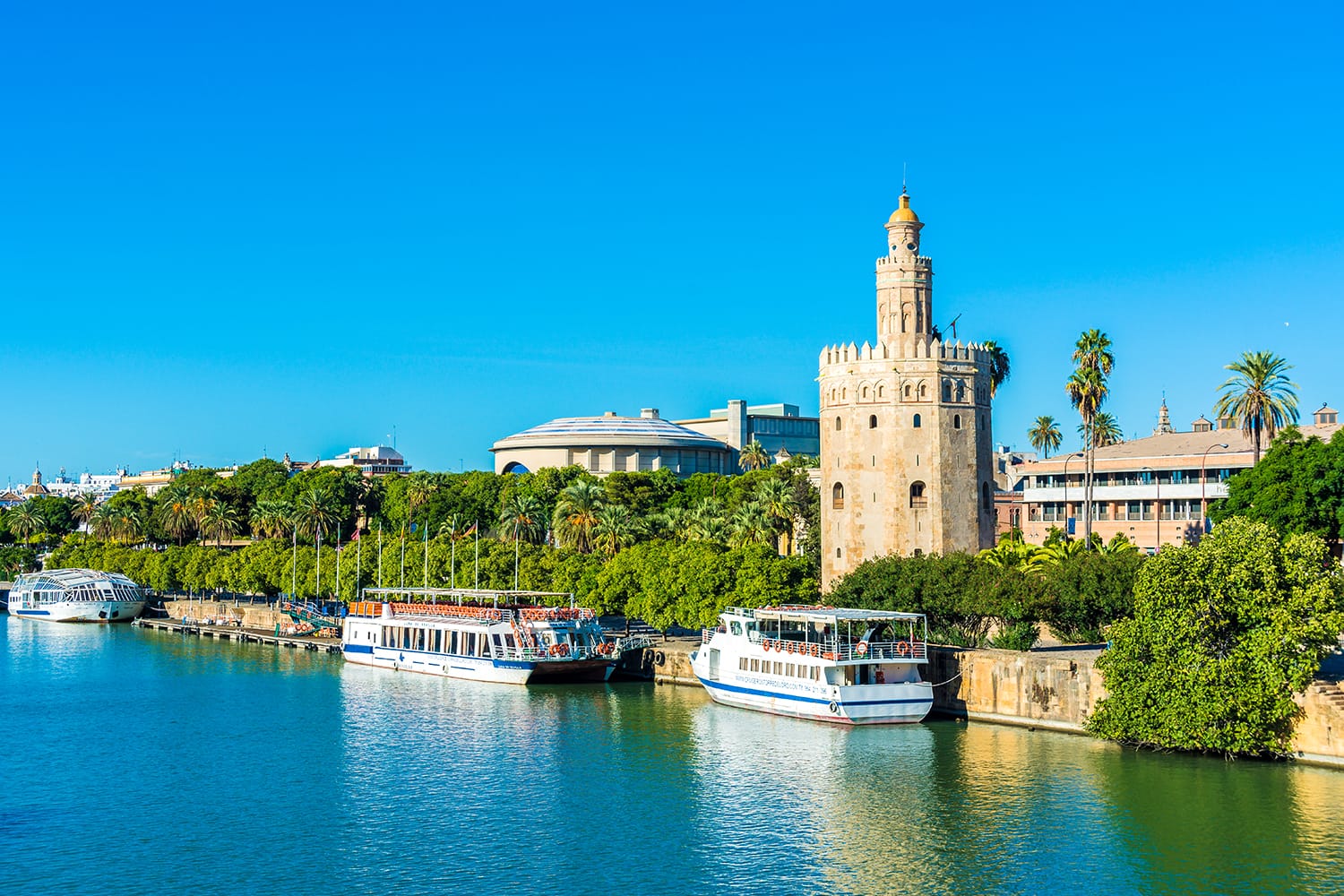
Triana
No district of Seville has a stronger local identity than Triana. Separated from the city center by the river, Triana has developed apart from Seville in many ways. Still, the two have had great impact on each other, with much of Seville’s creative flair tracing back to Triana. After all, the neighborhood is particularly known for its flamenco and azulejotiles.
Aside from walking the streets of Triana, you have a few landmarks to visit here. One is the Triana Market, which sells local produce and other items – and sits directly above the remains of the Castle of San Jorge. This castle was actually the local seat of the Spanish Inquisition, which you can learn more about at the nearby Spanish Inquisition Museum.
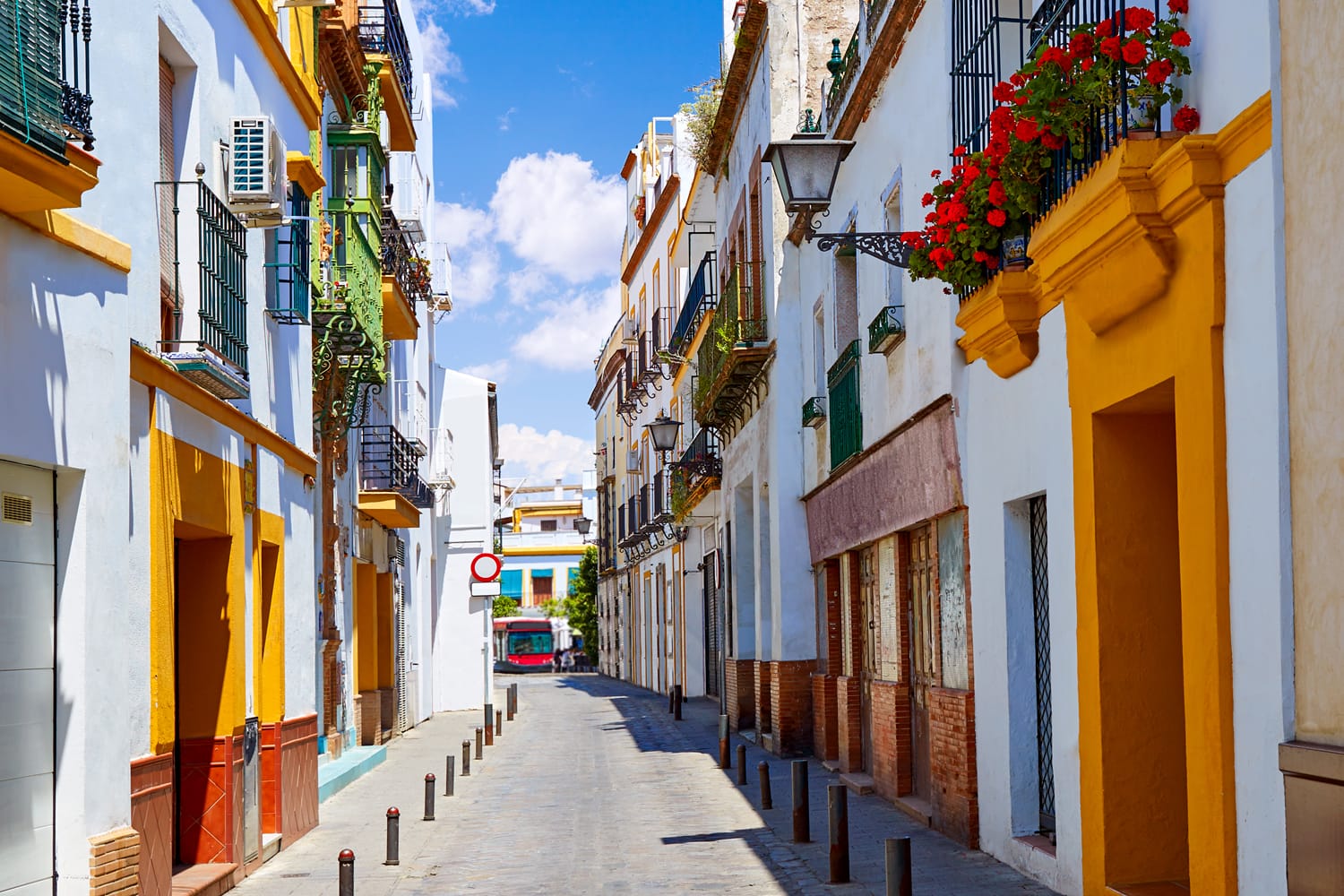
Flamenco Bars
To end your last day in Seville, stick around in Triana and find one of its many flamenco bars (tablaos). Flamenco performance is a deeply ingrained part of Andalusian culture, combining dance, instruments, and vocals into a vibrant art form. Performances are often held in intimate settings and tend to be more spontaneous and inclusive than a straightforward show.
Alternatively, head back to Santa Cruz and watch a traditional flamenco show at the Museo del Baile. You can buy tickets in advance here.
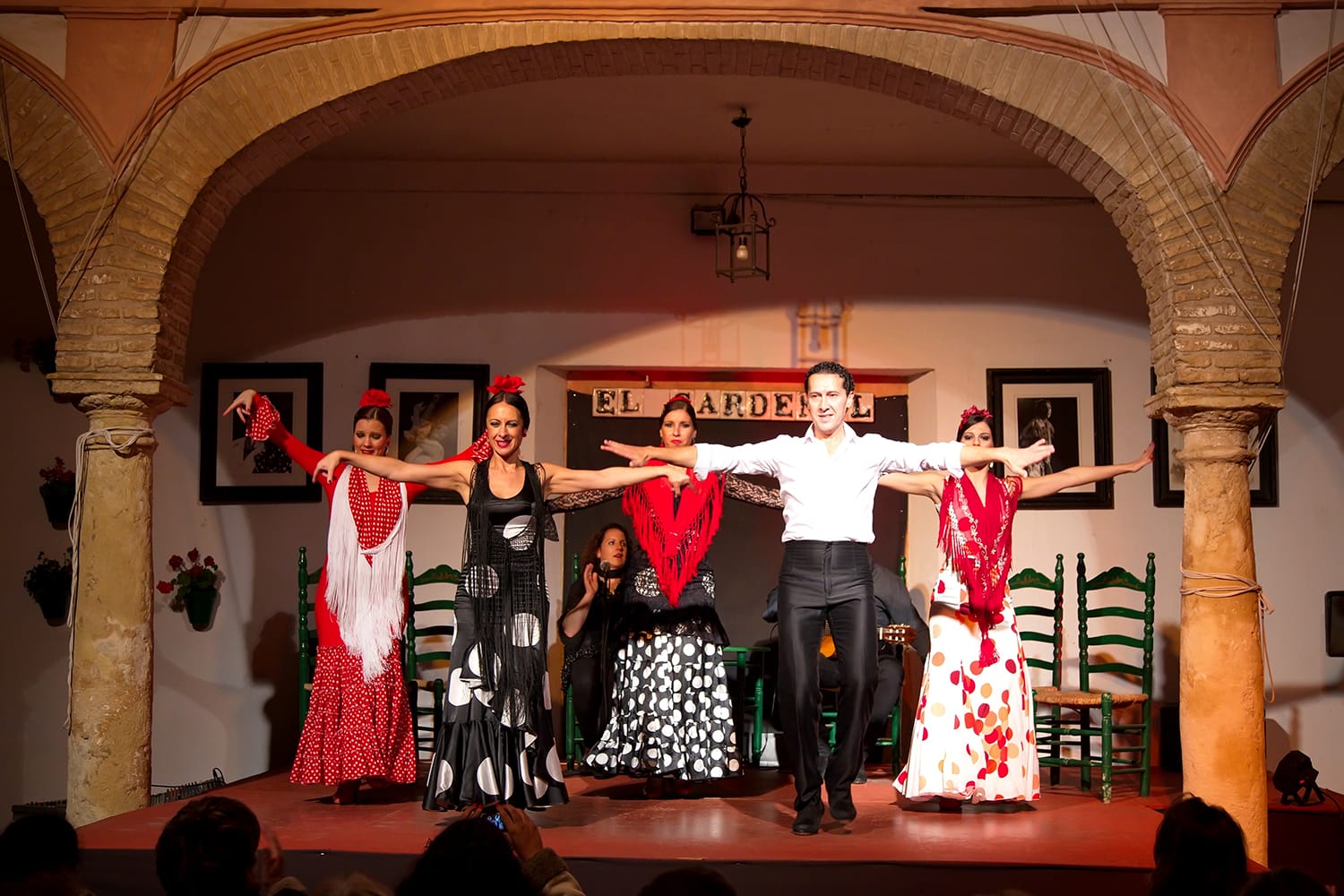
You should now feel pretty confident about what you can do in Seville in two days. We’re sure you’ll be thoroughly charmed by this exceptional city and its unbelievable beauty. Don’t miss our articles and tips on other great destinations in Spain!
Have more than two days in Seville? Consider taking a day trip or two. You can see some suggestions in our guide to the best day trips from Seville.
Visiting Seville as part of a greater Spain trip? Take a look at our Madrid itinerary, Granada itinerary and Barcelona itinerary as well.
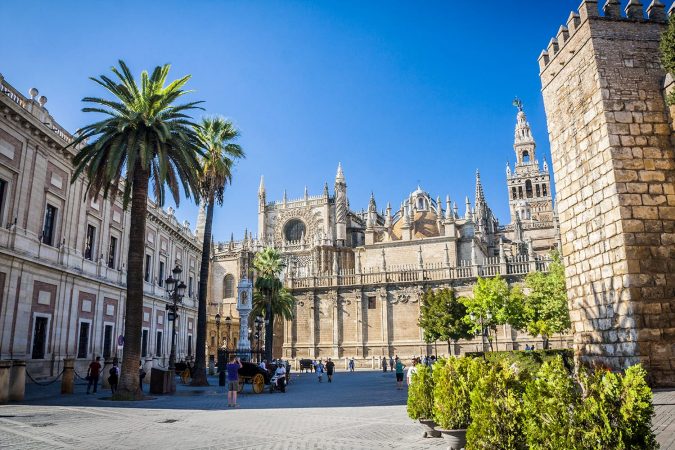
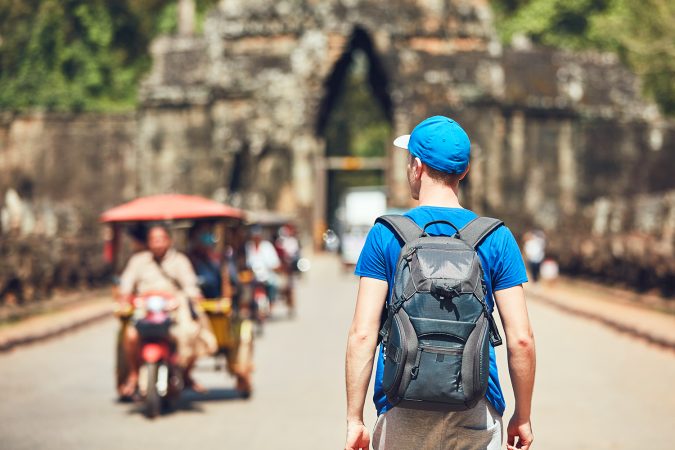
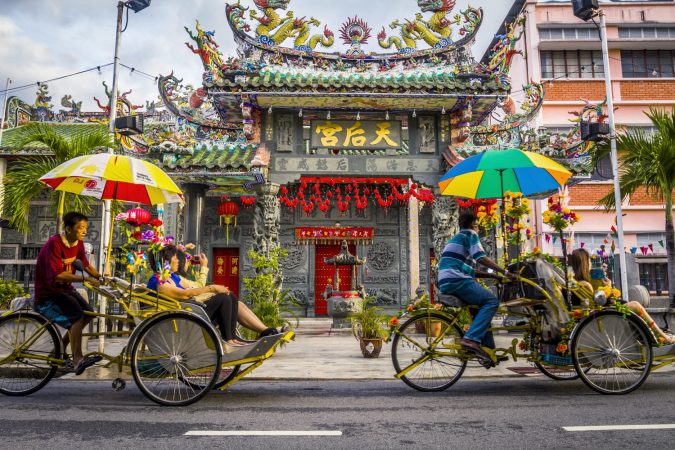
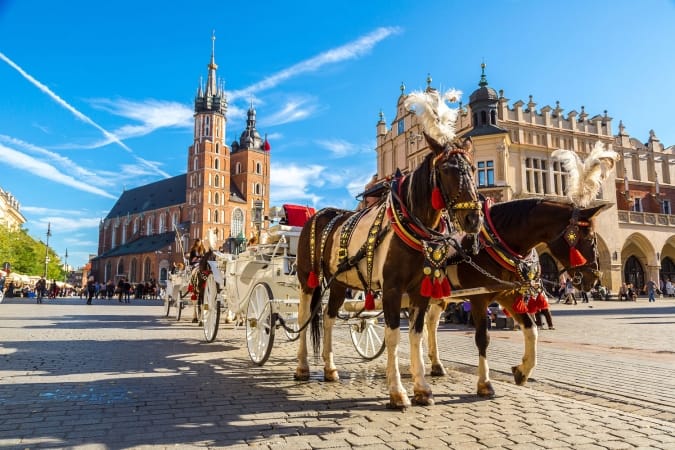
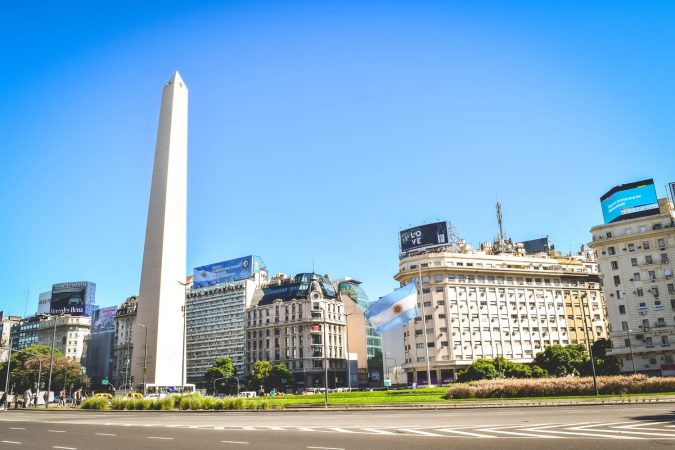

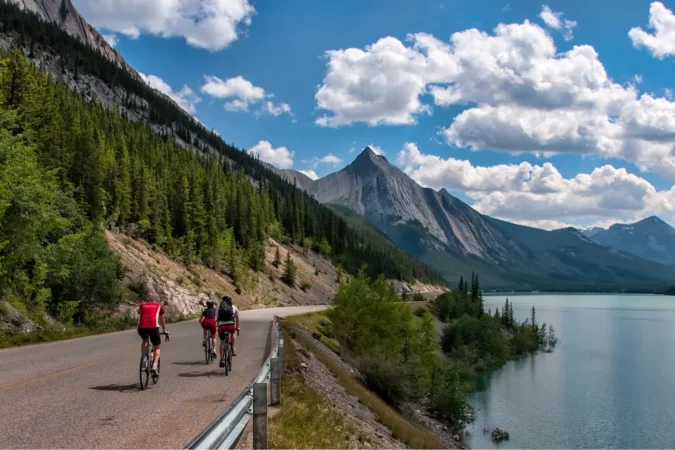
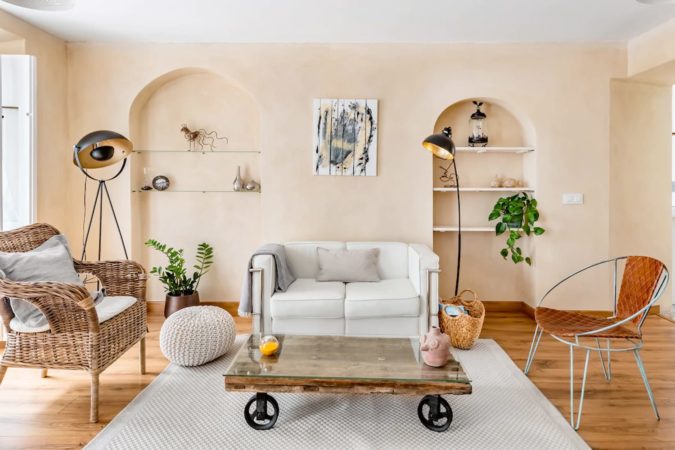
Catherine
Thanks for these recommendations! It is helpful in planning our trip to Seville!